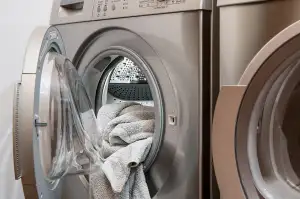Is it Safe to Microwave Styrofoam? Unveiling the Truth for a Safer Home

Microwaving food has become a convenient and time-saving method for many households. However, when it comes to using Styrofoam containers in the microwave, there is a growing concern about its safety. Styrofoam, also known as polystyrene foam, is a popular material used for packaging and food containers due to its lightweight and insulating properties. But is it safe to microwave Styrofoam? In this article, we will explore the truth behind microwaving Styrofoam and unveil potential risks associated with this practice. We will also discuss alternative options for heating your food in a safer manner, ensuring a healthier home environment for you and your loved ones.
Understanding Styrofoam
Styrofoam, also known as expanded polystyrene (EPS), is a popular material used for packaging and food containers. It is lightweight, insulating, and cost-effective, making it a common choice for takeout containers and disposable cups.
Styrofoam is made from polystyrene beads that are expanded using steam and pressure. This process creates a foam-like structure with small air pockets, giving it its excellent insulating properties. However, it is important to note that Styrofoam is not biodegradable and can persist in the environment for hundreds of years.
It is essential to understand that Styrofoam is not designed to withstand high temperatures. When exposed to heat, such as in a microwave oven, it can melt or release harmful chemicals into the food.
Therefore, before considering microwaving Styrofoam containers or packaging, it's crucial to evaluate the potential risks involved.
Microwaving Styrofoam: Is it Safe?
Microwaving food has become a common practice in many households, but what about microwaving Styrofoam containers? This question has sparked debates and concerns regarding the safety of using Styrofoam in the microwave.
Styrofoam, also known as expanded polystyrene foam, is a popular material used for packaging and food containers due to its insulating properties. However, when exposed to high temperatures, it can release potentially harmful chemicals into the food.
The US Food and Drug Administration (FDA) states that some Styrofoam containers are safe for microwave use, while others are not. It is essential to check the packaging or label for any indications of microwave safety before using them.
If the Styrofoam container is labeled as microwave-safe by the manufacturer, it means that it has undergone testing to ensure it does not leach harmful chemicals into the food when heated. These containers are designed to withstand high temperatures without melting or releasing toxins.
However, even if a container is labeled as microwave-safe, it is crucial to follow specific guidelines. Avoid microwaving fatty or oily foods in Styrofoam containers as they can reach higher temperatures and increase the risk of chemical leaching.
Furthermore, never use damaged or cracked Styrofoam containers in the microwave. These imperfections can compromise their ability to withstand heat and may lead to chemical migration into your food.
It's worth noting that some experts recommend transferring food from Styrofoam containers into microwave-safe glass or ceramic dishes before heating. This extra precaution eliminates any potential risks associated with using Styrofoam in microwaves altogether.
In conclusion, microwaving Styrofoam can be safe if you use specifically labeled microwave-safe containers and follow recommended guidelines. However, considering potential risks and alternatives might be wise for those who prefer a more cautious approach when it comes to their health and safety.
Potential Risks of Microwaving Styrofoam
While it may be convenient to use Styrofoam containers for microwaving, there are potential risks associated with this practice. One major concern is the release of harmful chemicals when Styrofoam is heated.
Styrofoam contains a compound called polystyrene, which can break down and leach into food when exposed to high temperatures. This can lead to the ingestion of these chemicals, which has been linked to various health issues.
One such chemical is styrene, which is classified as a possible human carcinogen by the International Agency for Research on Cancer (IARC). Prolonged exposure to styrene has been associated with an increased risk of cancer, particularly affecting the lungs and respiratory system.
Additionally, heating Styrofoam in the microwave can cause it to melt or warp. This can result in hot liquids or foods spilling out and causing burns or injuries. Moreover, melted Styrofoam may mix with food and alter its taste and texture.
It's important to note that not all Styrofoam products are microwave-safe. Some may have a label indicating their suitability for microwave use, but others do not. It's best to err on the side of caution and avoid microwaving any type of Styrofoam unless specifically labeled as safe.
To ensure a safer home environment, it is advisable to explore alternative options for heating food in the microwave. Using glass or ceramic containers labeled as microwave-safe is a better choice as they do not pose similar risks as Styrofoam.
By being aware of the potential risks associated with microwaving Styrofoam and opting for safer alternatives, we can prioritize our health and well-being while enjoying our meals conveniently.
Alternatives to Microwaving Styrofoam
If you are concerned about the safety of microwaving Styrofoam, there are several alternatives you can consider:
1. Glass containers: Glass is a safe and versatile option for heating food in the microwave. It does not release any harmful chemicals and is easy to clean.
2. Ceramic dishes: Many ceramic dishes are microwave-safe and can be used as an alternative to Styrofoam. Just make sure to check the label or manufacturer's instructions before using them in the microwave.
3. Microwave-safe plastic containers: Look for containers that are specifically labeled as microwave-safe. These containers are made from different types of plastic that do not release harmful chemicals when heated.
4. Silicone containers: Silicone is a popular alternative to Styrofoam for microwaving food. It is heat-resistant, flexible, and does not leach any chemicals into your food.
5. Paper plates or bowls: If you're looking for a disposable option, paper plates or bowls can be used instead of Styrofoam. However, make sure they are labeled as microwave-safe before using them in the microwave.
Remember, regardless of the alternative container you choose, always follow proper microwave safety guidelines such as covering your food with a lid or vented plastic wrap to prevent splattering.
By opting for these alternatives, you can ensure a safer and healthier way to heat your food without compromising on convenience or taste.
In conclusion, microwaving Styrofoam can pose potential risks to our health and the environment. While some Styrofoam products are labeled as microwave-safe, it is crucial to exercise caution and follow the manufacturer's instructions. The release of harmful chemicals when heated can contaminate our food and lead to health issues. To ensure a safer home, it is advisable to explore alternative options such as using microwave-safe glass or ceramic containers. By making informed choices, we can protect ourselves and the planet from the potential dangers associated with microwaving Styrofoam. Let's prioritize our well-being and make conscious decisions for a healthier future.
Published: 02. 03. 2024
Category: Home



